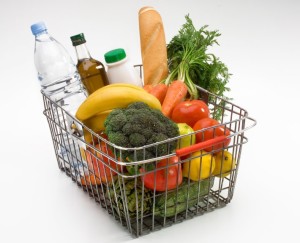 Steve Sipress
Head Rhino & Chief Strategist
Steve Sipress
Head Rhino & Chief Strategist
The Best Customers To Target In Today’s Economy
I spent most of my life indiscriminately shoving every conceivable kind of food into my mouth. Then, as I got older, I became more and more dissatisfied with my energy and fitness levels, until I finally attended a “healthy living strategies” seminar about seven years ago.
Since then, I have totally revolutionized my eating habits, and have become a huge fan of “healthy” restaurants, farmer’s markets and the Whole Foods supermarket chain.
Almost every time I bring up Whole Foods in a conversation, I get comments such as, “Food is too expensive there.” My response is always something about how investing in healthy food is a lot cheaper than hospital bills I’d surely be paying later in life had I not put an end to my unhealthy eating habits.
To be fair, whenever I make a trip to Whole Foods, I do remark to myself how their prices are significantly higher than at “regular’ supermarkets. But that certainly doesn’t stop me from shopping there, because healthy eating is something I strongly value in my life. And apparently, I’m not alone, because new Whole Food stores are popping up all over America, even during the current challenging economy.
That’s what led me to conduct my own highly-un-scientific, very-small-sample survey at a Whole Foods checkout area last week. The results were very interesting to me, and I think you might be intrigued, too.
While our shopping cart full of items was being beeped through to the bagger and the “Total Purchase” amount continued to rise and rise to what seemed to me to be a fairly high amount for a routine grocery purchase, I decided to ask the cashier, “James,” what was the largest single purchase he’d ever seen during his Whole Foods career.
“About $1700,” was his quick response, “but that was a few months ago when I worked in our Deerfield store. We don’t get customers like that here in Schaumburg.”
And to think I was wondering if our $400-something order was somehow remarkable.
Seeing the look of surprise on my face, James explained to me that the record purchase “included a lot of wine.”
“Okay,” I said (thinking to myself “That explains that once-in-a-lifetime, unheard-of sale”).
But then James quickly added, “Yes, but we get $1200 purchases all the time there.”
(In case you’re not familiar with the areas, Deerfield is an extremely affluent town in the ritzy “North Shore” suburbs of Chicago, while Schaumburg is a middle-class suburb with an average household income of about half that of Deerfield’s.)
So, what conclusion can we draw from my very-unscientific survey of the relative spending habits of the wealthy vs. the average consumer during this current challenging economy?
It really comes as no surprise to sharp small business owners, who have shifted to targeting affluent prospects for the past few years, regardless of who our typical customers were before the economic downturn.
As Small Business Marketing Expert Dan Kennedy teaches, “The affluent customer has zero price sensitivity when buying something tied to his personal interests and passions.” The facts back him up.
According to Unity Marketing’s recently-published “Luxury Report 2011,” consumers with annual incomes between $100,000 and $250,000 increased their spending on luxury goods by 25% between the start of 2009 to the end of 2010.
That’s right. While almost everything you see and hear in the popular media is all about how tough things are for the large majority of Americans, you have to pay attention to “smart marketing” resources to discover that the small minority of people who actually control most of the nation’s wealth are a rich source of revenue and profits for those of us who have adjusted our products and services – and marketing! – to appeal to the passions and interests of this group.
Think of it this way:
- During “good” economic times, the poor spend almost all of their income on necessities, and have very little “discretionary income” available. When the economy turns bad, it’s all these people can do to afford even their most basic needs.
- Average wage earners have a little bit more money to spend as they choose during good times, but have very little – if anything – to play with when the going gets tough.
- But relatively very little of the income of the wealthy goes towards basic necessities in a good economy, leaving them with a huge chunk of disposable income to spend and/or invest as they see fit. Even when the nation’s overall economy starts hurting, this small-but-powerful segment of society still has plenty of money to indulge their desires – including routinely spending $1200 on trips to a supermarket.
The moral of the story?
Unless you sell nothing but the most basic of necessities, your best strategy in a down economy is to provide luxury goods and services that appeal to passions and interests of the wealthy, and to learn how to market effectively to those consumers. If you haven’t yet made this crucial adjustment in your business, you’ll be very pleased when you do. And since an overall economic recovery is still a few years away, it’ll be very much worth your time and effort.


Recent Comments